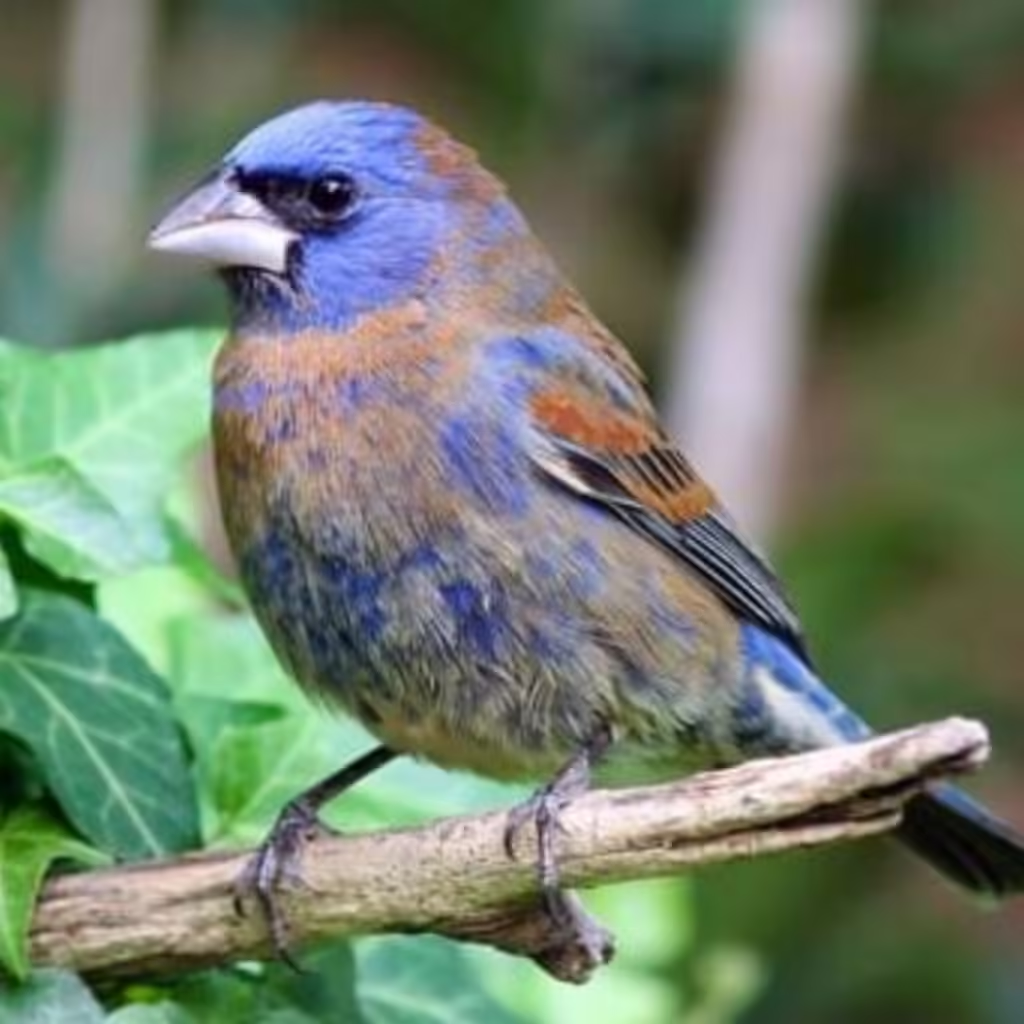
The Blue Grosbeak (Passerina caerulea) is a striking bird found across North and Central America. Its vibrant blue feathers and rich, melodic song make it a favorite among bird watchers. In this post, we’ll cover everything you need to know about Blue Grosbeaks, from their habitat to their diet, and how you can attract them to your backyard.
Also Read: Everything You Need to Know About the Indigo Bunting
Blue Grosbeak Habitat
Blue Grosbeaks prefer a variety of habitats, including thickets, forest edges, and brushy fields. They are commonly found in areas with dense vegetation which provides ample cover and nesting sites. These birds are also adaptable and can live in both rural and suburban areas, often seen near streams and rivers. During breeding season, they migrate to the southern United States, where they set up territories.

Diet of the Blue Grosbeak
Blue Grosbeaks have a diverse diet that changes with the seasons. In the spring and summer, they primarily feed on insects such as grasshoppers, beetles, and caterpillars. These protein-rich foods are essential for raising their young. In the fall and winter, they switch to seeds and grains, often visiting bird feeders for a quick meal. Providing a mix of seeds and insects can help attract these birds to your yard year-round.
Migration Patterns
The migration of Blue Grosbeaks is a remarkable journey. They travel from their breeding grounds in the southern United States to Central America for the winter. This migration usually occurs in late summer and early fall. Blue Grosbeaks are solitary migrators, meaning they don’t travel in flocks like some other bird species. Tracking their migration can provide insights into their behavior and the health of their populations.

Identifying Blue Grosbeaks
Identifying Blue Grosbeaks can be straightforward due to their distinctive coloring. Males are a deep blue with chestnut wing bars, while females are brown with a slight blue tinge. Both sexes have a stout, conical bill perfect for cracking seeds. They are similar in size to a sparrow but with a more robust build. Look for them in dense shrubs and low trees where they often perch.
Also Read: Everything You Need to Know About Red Factor Canary
Blue Grosbeak Song and Calls
The Blue Grosbeak is known for its beautiful song. Their song consists of a rich, warbling series of notes that can last for several seconds. Males sing to establish their territory and attract mates. They also have a distinctive call, a sharp “chip” sound, which they use to communicate with each other. Listening for their song is one of the best ways to locate these birds in the wild.

Nesting and Breeding Habits
Blue Grosbeaks are dedicated parents. Females build the nest in dense shrubs or small trees, using twigs, grasses, and sometimes snake skins. They lay 3 to 4 eggs per clutch, and the female incubates them for about two weeks. Both parents feed the chicks, which fledge about 10 days after hatching. Understanding their nesting habits can help in providing suitable nesting sites in your garden.
How to Attract Blue Grosbeaks to Your Yard
Attracting Blue Grosbeaks to your yard can be a rewarding experience. Planting native shrubs and trees provides the cover they need. Offering a mix of seeds and live insects can entice them to visit your feeders. Providing fresh water through bird baths or small ponds can also make your yard more attractive. Creating a bird-friendly environment will increase your chances of hosting these beautiful birds.

Conservation Status and Threats
Currently, Blue Grosbeaks are not considered endangered. However, habitat loss and changes in agricultural practices can threaten their populations. Conservation efforts focus on preserving their natural habitats and promoting bird-friendly farming practices. Being aware of these threats can help in supporting conservation initiatives.
Interesting Facts about Blue Grosbeaks
- Blue Grosbeaks are often mistaken for Indigo Buntings due to their similar coloring.
- They are known to sometimes use snake skins in their nests, possibly to deter predators.
- Despite their vibrant colors, they can be surprisingly hard to spot due to their preference for dense cover.
- They are one of the few bird species that continue to sing throughout the breeding season.

Conclusion
Blue Grosbeaks are fascinating birds with unique habits and behaviors. By understanding their needs and habits, you can appreciate them more and even attract them to your own backyard. Whether you’re a seasoned bird watcher or a novice, the Blue Grosbeak offers a delightful glimpse into the world of avian beauty.
Also Read: Everything You Need to Know About Adélie Penguins
FAQS about Blue Grosbeaks
Where do Blue Grosbeaks live?
Blue Grosbeaks breed in open woodlands, forest edges, riparian areas and brushy habitats in eastern and central North America. Their range extends from southern Canada to northern Mexico.
How to attract Blue Grosbeaks?
Provide thickets and shrubs with seeds like suet or black-oil sunflower. Stock birdbaths and offer berries like mulberries, crabapples. Plant native flowers and trees that produce insects for foraging.
What is the difference between indigo bunting and Blue Grosbeak?
Indigo Buntings are smaller, have vibrant blue plumage (males only), and migrate farther. Blue Grosbeaks are bigger, have slate-blue upperparts and whiter underparts with blue shoulder patches (males). Their ranges also differ slightly, with Blue Grosbeaks wintering farther south into Central/North America.
Pingback: Blue Grosbeak vs Indigo Bunting: What's The Difference?
Pingback: How to Attract Purple Martins to Your Backyard